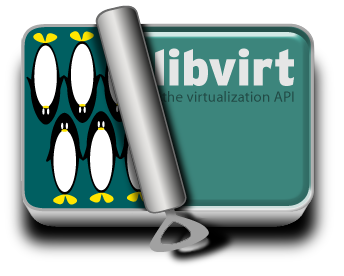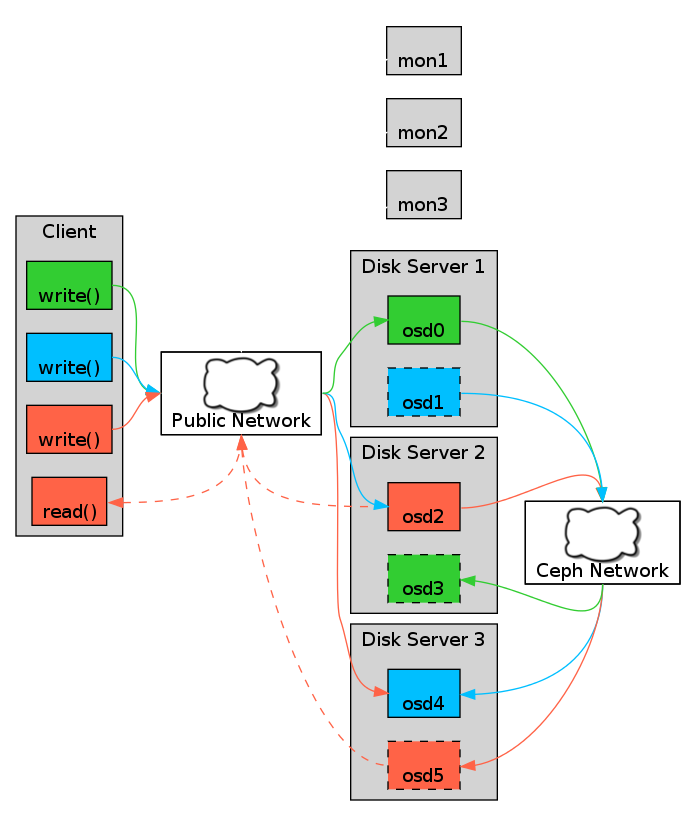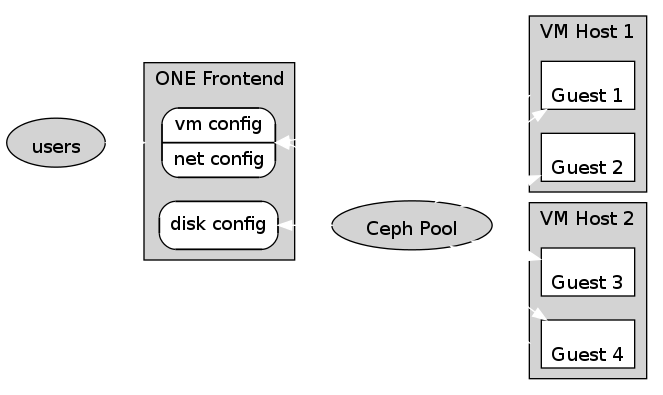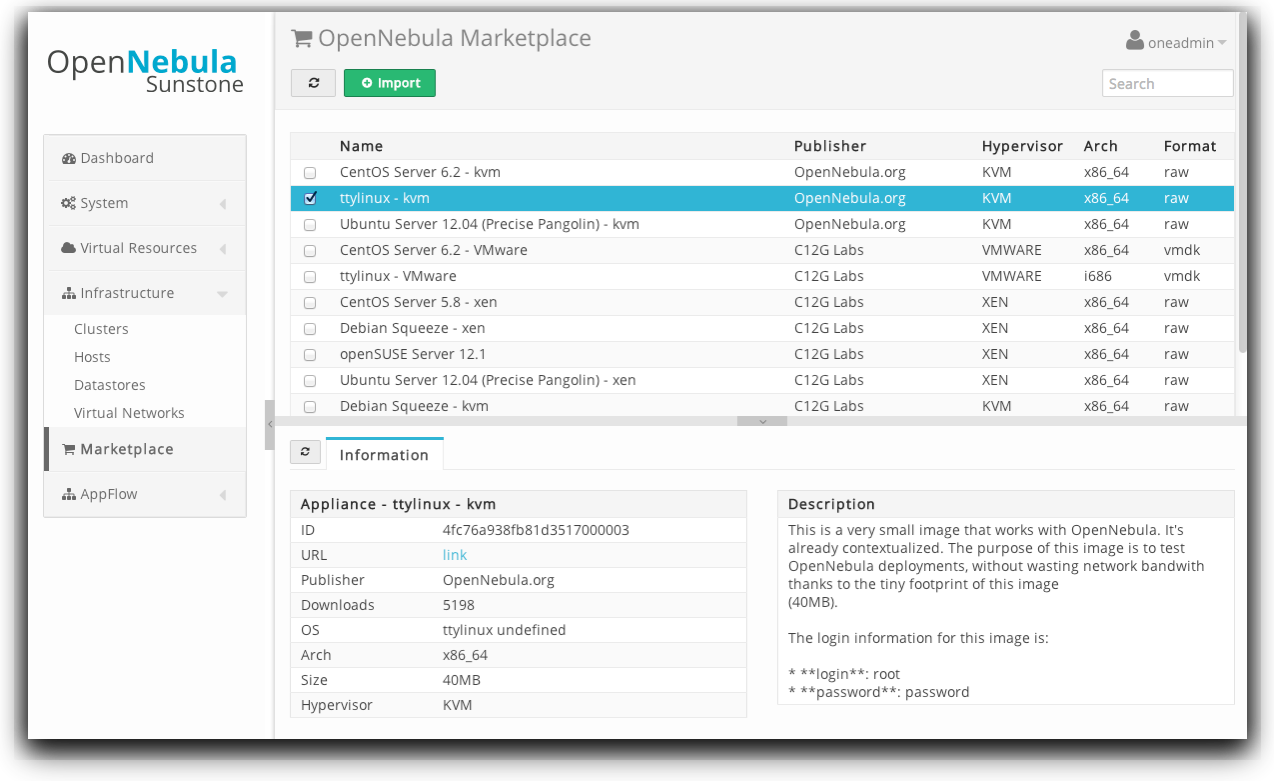Virtualisation with Ceph and OpenNebula
Matthew Richardson
March 2013
What do we want?
Management-Speak
"A highly available virtualisation pool that copes with hardware failure and service interruption, integrating aspects of autonomic decision-making, using configuration management for both service and guest deployment, whilst remaining performant and cost-effective in comparison to physical hardware solutions."
Availability
- Guests should always be running
- Migrations should be live
- No scheduled downtime
Redundancy
- Hosts go down
- Disks fail
- Guests crash
Flexibility
- Load balancing, monitoring, scheduling
- Scaling must be easy
- Automate as much as possible
- Manual control available if needed
How do we get it?
Virtualisation

Libvirt & qemu/KVM
- Handles live migrations
- Hugely configurable
- Guest OS agnostic
Storage
(rbd)
- Network block devices
- Distributed & replicated
- Scaleable (automatically)
- Sparse disk images
- qemu integration
- ...
Ceph in Action

Cluster Management
- 'Cloud Management Platform'
- Controls Resources:
- VM Hosts
- Disk Images
- Guest VMs
- Guest networking
- Done with libvirt & ceph integration
Useful Features
- Relatively simple to set up
- Resource creation from templates
- Failure monitoring & hooks
- Load-balancing & guest placement
- Can be turned off
OpenNebula in action

Management Tools
OpenNebula Sunstone

Command-line
- Similar functionality to Sunstone
- Scriptable, parseable
- 'Personal preference'
LCFG
- Component:
- Resource creation (& deletion)
- ONEDB backup and restore methods
- External inventory integration
Demo (?)
opennebula
LCFG
vmhost 1
vmhost 2
guest VM
Future Work
- Advanced guest placement
- More clusters: research, teaching, development
- Wider use: shared LCFG config
- Use a different Management Platform?
Any Questions?

m.richardson@ed.ac.uk